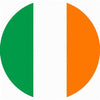Your Cart is Empty
What factors in your environment can affect gaze interaction?
September 01, 2017
Environmental factors that may make calibrating difficult include
- Bright lights that may cause reflections around the individual user. Look at lights above the user, bright lamps in front of or behind the user may also affect eye tracking. Although it is good to be aware of bright lights, it does not need to be dark in order to use eye tracking.
- Excess/Insufficient eye moisture - Watery eyes may make too many reflections but more often, dry eyes do not allow the illuminators in the eye tracker to reflect well.
- Eye conditions such as nystagmus and strabismus confuse the eye tracker. People with strabismus may be able to patch one eye in order to use the device with the more dominant eye.
- Some medicines cause eyes to dilate. When eye are dilated the eye tracker is unable to identify precisely where the user is looking.
- Sometimes the eye tracker may become dirty. If this occurs follow the instructions in the manual that came with your device or eye tracker in order to clean it.
- Reflective material on or near client
- Although most glasses will work fine with eye tracking, some do pose problems. Glossy lenses and shiny frames may distract the eye tracker from where the user is looking.
Recent Articles
- What are the system requirements for the PCEye 5? November 05, 2025
- Can I use my PCEye with a Surface Pro? November 05, 2025
- How to unlock the TD Navio with a keyguard installed October 14, 2025
- How do I update iPadOS in my TD Navio, TD Pilot, or Speech Case? September 12, 2025
- What do I do if I forgot my TD Pilot / Speech Case / TD Navio passcode? September 11, 2025
- How can I use iPadOS shortcuts and TD Snap to send a text message? August 22, 2025
- I can connect to other networks, so why can't I connect to this one? August 01, 2025
- Launch Apple Shortcuts from TD Snap® (iPadOS only) version 1.37 and above July 30, 2025
- What is the Self-Service App on my Tobii Dynavox AAC device. SC Tablet, Speech case, Navio and TD Pilot. How to use it. June 26, 2025
- Why is my keyboard typing in all CAPS? May 23, 2025
Also in Support articles
Your opinion matters to us.
Please take a brief survey to help us improve.
Open success Modal












